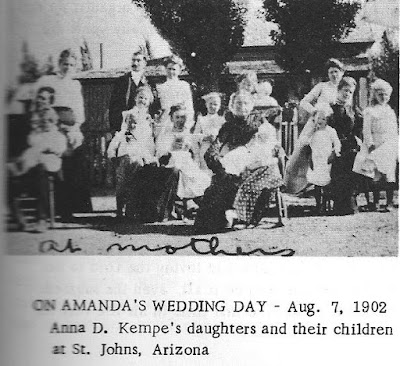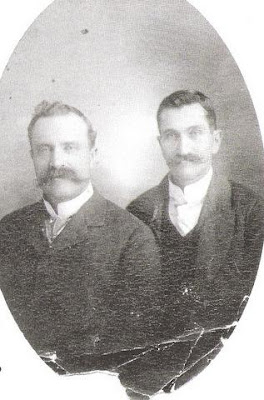Robert Livingston was born about 1663 in Scotland and was the son of James Livingston and nephew of Robert Livingston the Elder. Of his father James Livingston, we learn,
"James, ninth child and fifth son, was born also at Stranraer, Scotland, 22 September, 1646; he was like his elder brother William, an Edinburgh merchant, and also fell under the displeasure of the Privy Council, and fined two hundred pounds (Scots) in 1680. He was, apparently, married twice, but only the name of his second wife is known — Christian Fish.1 By his first wife he had a son — Robert — who went out to join his uncle Robert in America in 1687, and is known in the family annals as Robert "The Nephew," of whom more hereafter. James's death on 4th June 1700, and that of his elder brother William, are mentioned by their sister Barbara in a letter to her brother Robert in New York, in which she writes :
— I left Holland when I lost my two best friends there, my mother and my sister (Mrs. Russell], and came here [Edinburgh] to the rest of my friends, and now it has pleased the Lord also to take my two brethren. My brother James was healthful and strong, but was suddenly plucked away by a fever. . . . There were only 10 days betwixt their deaths, and tho' my brother Mr. William had long been tender yet his death was also a surprise to us all."
As soon as Robert, the uncle, had become firmly settled in the New World, and about the time when Albany had received its civic charter from Governor Dongan, he wrote to his elder brother James, advising him to send his son Robert out to him, and promising "that nothing should be wanting on his part to secure the lad's fortune." The exact age of this younger Robert, when he left his father's house at Edinburgh to join his uncle in America, is unknown. He was sent to London to embark for New York, where he was placed under the care of Mr. Jacob Harwood, the senior Robert's English agent, who gave him a letter of introduction to his uncle in America, which is still in existence, and is dated London, August 12, 1687. In this letter Mr. Harwood remarks, the youthful bearer "hath wit enough." He reached Albany in the month of November following.
The senior Robert faithfully kept his promise, and through his influence his nephew was so well received by the old Dutch families of Albany, that ten years later he married Margaretta Schuyler, the eldest daughter of his uncle's great friend and brother-in-law, Colonel Peter Schuyler. In 1699, his uncle requiring assistance in carrying on his duties as town clerk, and none of his sons being of an age to be of use, appointed Robert, junior, to be his deputy, subject to the approval of the Common Council, which was readily granted. From the council minutes we learn that five years after wards, on the 23rd May, 1704, his services were remunerated with the magnificent annual salary of five pounds and ten shillings, which included "the supplying of paper," but which was to commence from the 14th of June, 1703. On the same day in which this salary was granted, he was sworn to keep a true minute book of the Mayor's Court. He acted as his uncle's deputy until the 6th of May, 1707, when his cousin Philip, being of age, was appointed in his place. At the same time, the nephew was able to prosper in business, using family connections and experience to supply both settler and military customers.
Robert, the Nephew, however, kept up his public connection with the city of Albany, and in the month of January following he was elected alderman of the first ward of that city. He must have fully possessed the confidence of his fellow citizens, for having been appointed by Governor Hunter, Mayor of Albany in 1710 succeeding Johannes Abeel, he held that office for nine years continuously until 1719 when he was succeeded by Myndert Schuyler, "a longer term but one than any other, in colonial times or since." During his tenure, Albany grew from a trading post to the area's major supply and services center.
He also sat in the House of Assembly, as one of the representatives of Albany, from 1711 to 1715. He was also one of the Commissioners for Indian Affairs, and in that capacity, like his uncle, he was brought into frequent official intercourse with the natives.
In the spring of 1720 he accompained Myndert Schuyler, another Commissioner, on a mission to the Senecas' "castle " or village, for the purpose of persuading the Five Nations to put a stop to some threatened hostilities with some other Indians, who were in alliance with the English. Also to throw obstacles in the way of the French, whose increasing encroachments on the Indian territories had given rise to a feeling of uneasiness in New York. The two commissioners were absent from Albany close upon six weeks, and from their report of the negotiations with the sachems of the Five Nations, it appears their commission was a successful one, as the Indians promised to perform all that "Brother Corlaer" required; and if in the future any emergency should arise, they promised to come to New York for advice, instead of going to the governor of Canada, as they had hitherto been in the habit of doing. Of this Robert there is nothing further of interest to relate. He died in 1725, in the lifetime of his uncle, and was buried in the Dutch Church at Albany on the 21st of April in that year. By his wife, Margaretta Schuyler, he had the following children, namely four sons and two daughters: —
During his tenure, Albany grew from a trading post to the area's major supply and services center. Livingston was also appointed as one of the English colony's Commissioners for Indian Affairs. In 1697 Livingston married Margareta (or Margarita) Schuyler (b 1682), the daughter of Pieter Schuyler, the first mayor of Albany.
They had six children:
Engeltje (b 1698), married John van Rensselaer of Claverack
James (b 1701)
Janet (b 1703), married Colonel Henry Beekman of Rhinebeck
Peter (b 1706), fur trader, killed by Seneca Indians near Geneva, NY
John (b 1709), died 1791 and married Catherine Ten Broeck
Thomas, who died young. Their children "married into the best provincial families and enjoyed great success in the business of New York, Montreal, and the lands in between
Robert Livingston the Younger died in April 1725 at was buried in the Dutch church at Albany.
my connection to Robert Livingston, the Nephew
Robert Livingston, the Nephew married Margareta Schuyler
their son John Livingston married Cataryna Ten Broeck
their son Abraham Livingston married Maria Peebles
their daughter Jane Livingston married Edwin Williams
their son Hugh Welch Williams married Annis White Gleason
their son Charles Eli Williams married Louisa Christensen
their son Charles Frederick Williams married Illa L C Hawks
their son Carroll D Williams married Lois Keele
their daughter married A. Craig Curtis
and had...





















